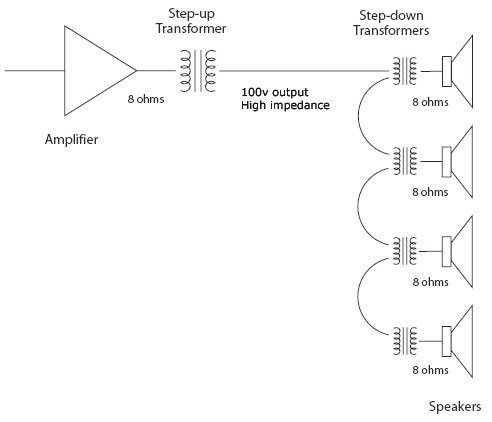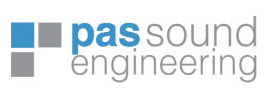100v Public Address Basics
Installing a PA System
Audio Principles & Theory
Miscellaneous
Public Address Information - 3
| 100V Line Public Address |
| Interfacing between the amplifier and speakers is commonly done in one of two ways. Small systems with one or two speakers will typically use a direct connection between the speakers and the amp. This is sometimes called low impedance operation, because the load impedance ranges from 4 to 16 ohms nominal. Systems with more than 2 speakers usually use transformers at the amp and at each speaker to simplify impedance matching and reduce line loss. These systems are commonly called distributed line systems, 100 volt systems, or constant voltage systems. In both cases, speakers should be wired in parallel (plus to plus and minus to minus). These systems work by including transformers at the input to each speaker and directly after the amplifier output (see fig. 8). The transformers are used to convert the impedance of each speaker to a higher value, and to convert the amplifier output impedance to a correspondingly high value. In a 100 volt line system, speaker impedances (with transformers) may range from below 20 ohms to as high as 10,000 ohms or more. But you won’t need to calculate the load impedance in ohms, because of how the high impedance approach works. |
| High impedance (100 volt and 70 volt (USA) line) systems have three major advantages over low-impedance
systems: 1) System impedance-matching is made much easier — it is simply a matter of adding up speaker power taps and selecting an amplifier rated for at least that much power plus an allowance for headroom. 2) Line loss is greatly reduced, especially over long cable runs, resulting in better performance and reduced cost compared to long low impedance lines. 3) The amplifier output is electrically isolated from the speaker line by the output transformer, protecting the output stage against a grounded line and thus eliminating a potential source of system failure. |
 |
  |
| See examples of 100v line products and systems here |



